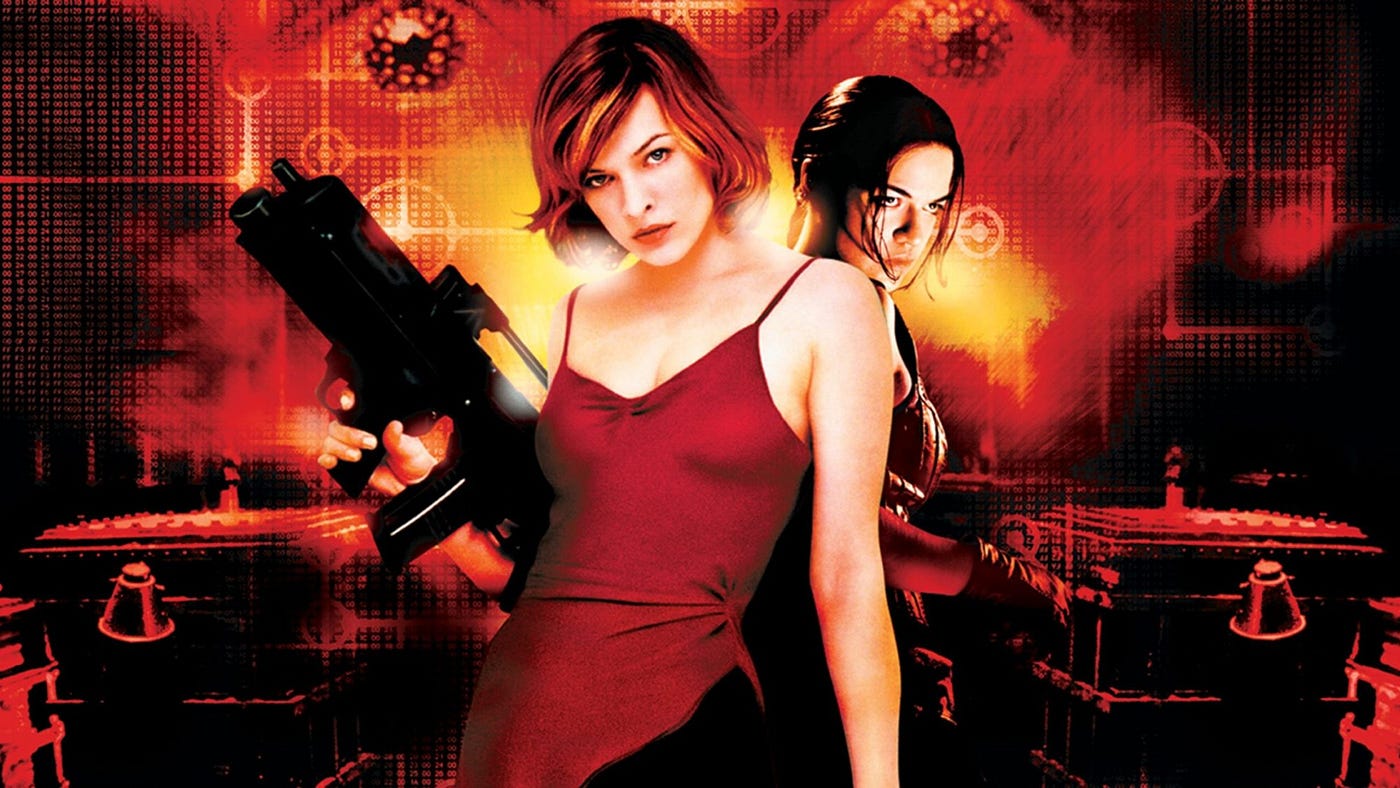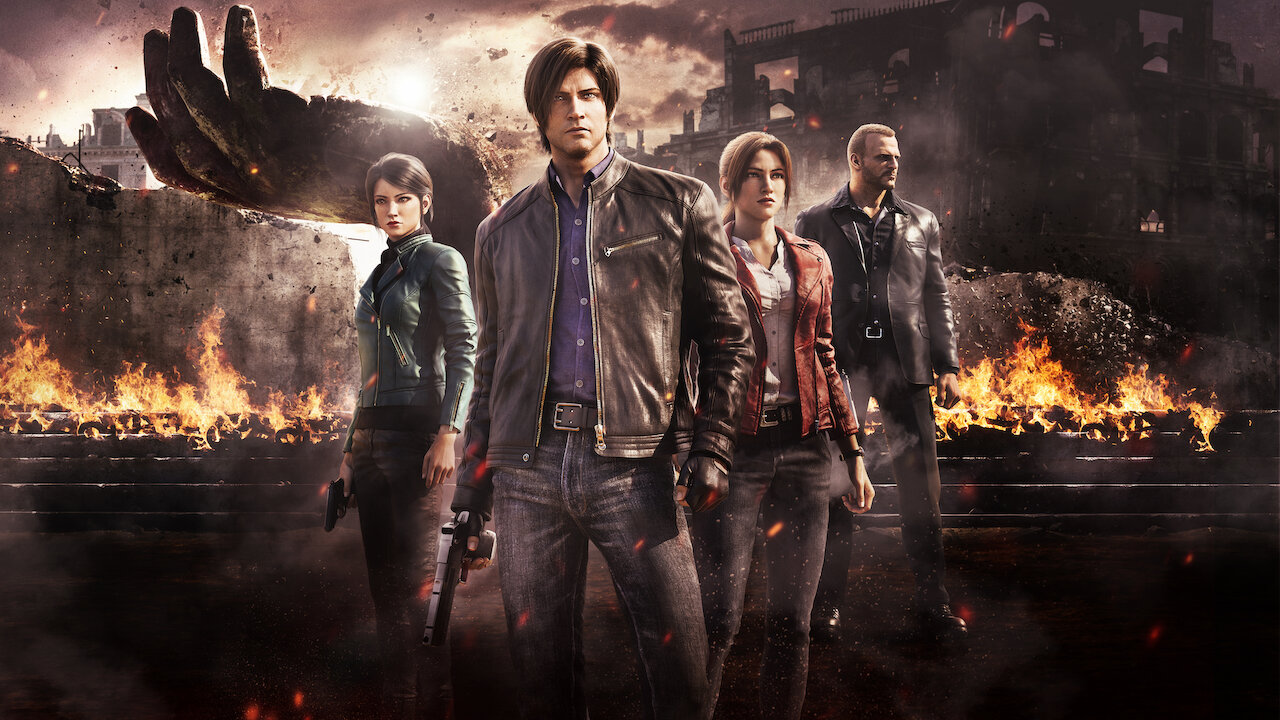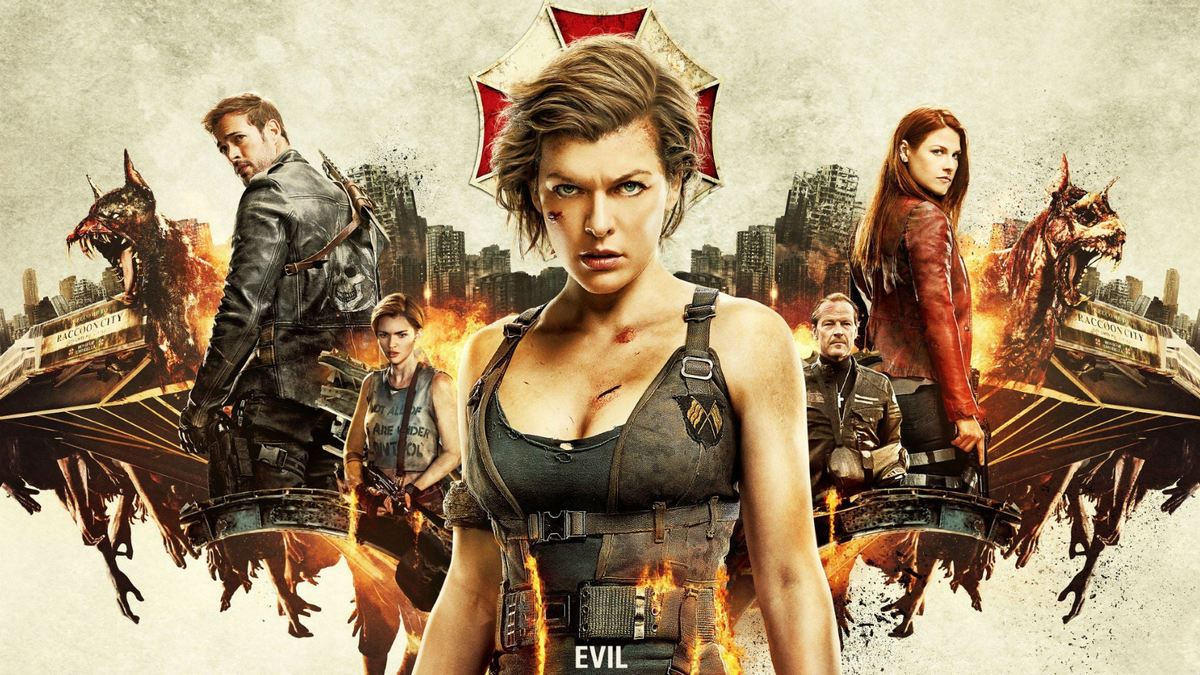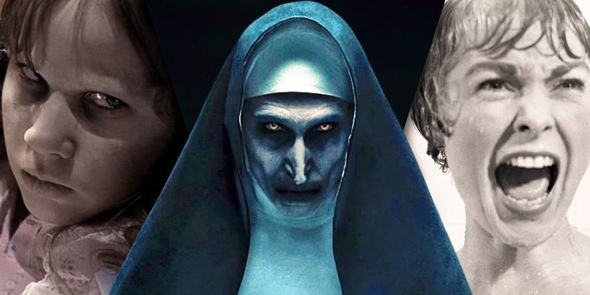Table of Contents
Chronological Order of Resident Evil Movies
1. Resident Evil: Welcome to Raccoon City (2021)
3. Resident Evil: Apocalypse (2004)
4. Resident Evil: Extinction (2007)
5. Resident Evil: Degeneration (2008, animated)
6. Resident Evil: Afterlife (2010)
7. Resident Evil: Damnation (2012, animated)
8. Resident Evil: Retribution (2012)
9. Resident Evil: Vendetta (2017, animated)
10. Resident Evil: The Final Chapter (2016)
Recent Additions to the Resident Evil Universe
Resident Evil: Infinite Darkness (2021)
Resident Evil: Death Island (2023)
Box Office Performance and Impact
The Resident Evil franchise, created by Paul W.S. Anderson, has been a staple of the survival horror genre for decades, spanning video games, novels, and a successful film series. For fans looking to dive into the cinematic world of Resident Evil, watching the movies in chronological order can provide a more cohesive and immersive experience.
This guide will walk you through the proper sequence to watch the Resident Evil films, including both the live-action movies and animated entries, to help you fully appreciate the intricate storyline and character development.
Before we begin, it's important to note that the Resident Evil film series consists of two distinct timelines:
- The live-action film series (2002-2016), starring Milla Jovovich
- The computer-animated film series (2008-2017)
While these two series exist in separate continuities, we'll include both in our chronological viewing order to give you a comprehensive Resident Evil movie experience.
Chronological Order of Resident Evil Movies
| Title | Year | Amazon Link |
| 1. Resident Evil: Welcome to Raccoon City | 2021 | Rent/Buy Movie |
| 2. Resident Evil | 2002 | Rent/Buy Movie |
| 3. Resident Evil: Apocalypse | 2004 | Rent/Buy Movie |
| 4. Resident Evil: Extinction | 2007 | Rent/Buy Movie |
| 5. Resident Evil: Degeneration (animated) | 2008 | Rent/Buy Movie |
| 6. Resident Evil: Afterlife | 2010 | Rent/Buy Movie |
| 7. Resident Evil: Damnation (animated) | 2012 | Rent/Buy Movie |
| 8. Resident Evil: Retribution | 2012 | Rent/Buy Movie |
| 9. Resident Evil: Vendetta (animated) | 2017 | Rent/Buy Movie |
| 10. Resident Evil: The Final Chapter | 2016 | Rent/Buy Movie |
Now, let's dive into each film and explore how they fit into the overall Resident Evil timeline.
1. Resident Evil: Welcome to Raccoon City (2021)

Although this film was released after the conclusion of the Milla Jovovich-led series, it serves as a reboot and origin story for the live-action films. Directed by Johannes Roberts, the movie is set in 1998 and closely follows the plot of the first two Resident Evil video games. It introduces key characters like Chris Redfield (Robbie Amell), Claire Redfield (Kaya Scodelario), Jill Valentine (Hannah John-Kamen), and Leon S. Kennedy (Avan Jogia).
The movie depicts the fall of Raccoon City and the outbreak of the T-virus, which turns the population into zombies. It provides crucial background information on the evil Umbrella Corporation and the events that set the stage for the rest of the series. The film also features Albert Wesker, a key antagonist in the Resident Evil universe.
2. Resident Evil (2002)

The first Resident Evil movie, directed by Paul W.S. Anderson, introduces us to Alice (Milla Jovovich), an original character created for the films. As an amnesiac security operative, she wakes up in a mysterious mansion. Alongside a team of commandos, including Rain Ocampo (Michelle Rodriguez), Alice investigates a secret underground facility known as the Hive, where they encounter the deadly consequences of a viral outbreak caused by the Umbrella Corporation.
This first movie establishes core elements of the Resident Evil universe, including the T-virus, zombies, and the nefarious Umbrella Corporation. It also introduces the Red Queen, an AI system that controls the Hive.
3. Resident Evil: Apocalypse (2004)

Directed by Alexander Witt, "Apocalypse" is set immediately after the events of the first film. It follows Alice as she navigates the zombie-infested streets of Raccoon City. The T-virus has spread beyond the Hive, and Alice must team up with a group of survivors, including Jill Valentine (Sienna Guillory) and Carlos Olivera (Oded Fehr), to escape the city before it's destroyed by a nuclear strike.
This installment introduces the Nemesis, a powerful bioweapon that serves as the primary antagonist. It also delves deeper into Alice's enhanced abilities resulting from her exposure to the T-virus.
4. Resident Evil: Extinction (2007)
Taking place several years after "Apocalypse," "Extinction" presents a post-apocalyptic world where the T-virus has spread globally, leading to a zombie apocalypse. Alice, now with powerful psychic abilities, travels across the Mojave Desert with a group of survivors. They encounter a colony of survivors in Las Vegas and must fend off hordes of zombies and mutated creatures.
This film expands on the world-building of the series, showing the devastating effects of the viral outbreak on a global scale. It also introduces the concept of Alice clones, which becomes a significant plot point in later films.
5. Resident Evil: Degeneration (2008, animated)

While not part of the live-action series, "Degeneration" is the first computer-animated Resident Evil film. Set in 2005, seven years after the destruction of Raccoon City, it follows Leon S. Kennedy and Claire Redfield as they investigate a new T-virus outbreak at an airport.
This film adheres more closely to the video game canon and provides additional context for the ongoing struggle against bioterrorism in the Resident Evil universe.
6. Resident Evil: Afterlife (2010)

Returning to the live-action series, "Afterlife" picks up where "Extinction" left off. Alice continues her quest to find survivors and take down the Umbrella Corporation. She travels to Los Angeles, where she discovers a group of survivors hiding in a prison, including Claire Redfield (Ali Larter) and her brother Chris.
This installment introduces new threats, such as the Axeman (inspired by the Executioner Majini from Resident Evil 5) and showcases more of Alice's superhuman abilities.
7. Resident Evil: Damnation (2012, animated)

The second animated film in the series, "Damnation," is set in 2011 between the events of Resident Evil 5 and Resident Evil 6 video games. It follows Leon S. Kennedy as he investigates the use of bioweapons in a European war zone.
While not connected to the live-action films, "Damnation" provides valuable insight into the wider Resident Evil universe and the ongoing fight against bioterrorism.
8. Resident Evil: Retribution (2012)

The fifth entry in the live-action series sees Alice captured by Umbrella and imprisoned in an underwater facility. She must fight her way through simulated environments and face off against clones of her former allies and enemies.
"Retribution" brings back several characters from previous films and delves deeper into Alice's origins and her connection to the Umbrella Corporation. It also features the return of characters like Ada Wong and Barry Burton.
9. Resident Evil: Vendetta (2017, animated)

The third animated film in the series is set between the events of Resident Evil 6 and Resident Evil 7 video games. It features Chris Redfield enlisting the help of Leon S. Kennedy and Rebecca Chambers to stop a deadly virus from spreading in New York City.
Although released after "The Final Chapter," "Vendetta" takes place earlier in the timeline and offers a different perspective on the ongoing battle against bioterrorism.
10. Resident Evil: The Final Chapter (2016)

The concluding chapter of the live-action series brings Alice back to where it all began: Raccoon City. With humanity on the brink of extinction, Alice must return to the Hive to retrieve an antivirus that could save what's left of the human race.
"The Final Chapter" ties up loose ends from previous films and provides closure to Alice's story, revealing shocking truths about her past and the true nature of the Umbrella Corporation.
Understanding the Timelines
It's worth noting that while the live-action and animated series exist in separate continuities, they share many common elements and characters. The animated films tend to stick closer to the video game canon, while the live-action series takes more creative liberties with the source material.
The live-action films, centered around the original character of Alice, form a continuous narrative from the first Resident Evil movie (2002) to "The Final Chapter" (2016). These movies create their own mythology within the Resident Evil universe, expanding on themes and concepts from the games while introducing new elements.
On the other hand, the animated films ("Degeneration," "Damnation," and "Vendetta") are more directly tied to the video game timeline. They feature familiar characters like Leon Kennedy and Chris Redfield and often fill in gaps between game releases.
Recent Additions to the Resident Evil Universe
In addition to the main film series, there have been recent additions to the Resident Evil cinematic universe that fans might want to explore:
Resident Evil: Infinite Darkness (2021)

This Netflix series is a CGI animated show set in 2006, between the events of Resident Evil 4 and Resident Evil 5. It features Leon S. Kennedy and Claire Redfield investigating zombie outbreaks and government conspiracies. While not a movie, it adds to the overall Resident Evil story and fits into the chronological timeline after "Degeneration."
Resident Evil (2022)

This live-action Netflix series is set across two timelines: 2022 and 2036. It introduces new characters and storylines while incorporating elements from the games. Although it's not directly connected to the movie series, it offers a fresh perspective on the Resident Evil universe.
Resident Evil: Death Island (2023)

The latest animated film in the series, "Death Island," features Leon S. Kennedy, Chris Redfield, and Jill Valentine. Its release date was set for summer 2023, and it continues the tradition of the animated films staying close to the video game canon.
Box Office Performance and Impact
The Resident Evil film franchise has been a significant success at the box office, particularly for a video game adaptation. The series has grossed over $1.2 billion worldwide, making it one of the highest-grossing film series based on a video game.
Here's a brief overview of each live-action movie's box office performance:
- Resident Evil (2002): $102 million
- Resident Evil: Apocalypse (2004): $129 million
- Resident Evil: Extinction (2007): $147 million
- Resident Evil: Afterlife (2010): $300 million
- Resident Evil: Retribution (2012): $240 million
- Resident Evil: The Final Chapter (2016): $312 million
- Resident Evil: Welcome to Raccoon City (2021): $42 million (affected by the COVID-19 pandemic)
These numbers demonstrate the enduring popularity of the franchise on the big screen, despite often mixed reviews from critics.
Exploring the Safe Haven
Throughout the Resident Evil series, the concept of a "safe haven" is recurring. Whether it's the false promise of Arcadia in "Extinction" and "Afterlife" or the underground facility in "The Final Chapter," the idea of finding a sanctuary in a world overrun by zombies is a central theme. This motif reflects the characters' constant struggle for survival and their hope for a better future.
The Future of Resident Evil on Screen
With the conclusion of the original live-action series and the release of "Welcome to Raccoon City," the future of Resident Evil in film remains open. The success of the reboot may lead to further adaptations more closely aligned with the video game source material.
Additionally, the popularity of the animated films and the recent Netflix series suggests that we may see more entries in various formats, possibly exploring other characters and storylines from the expansive Resident Evil universe.
Fans are always eager to learn about new release dates for upcoming Resident Evil projects, whether they're movies, series, or games. Keep an eye out for announcements from Capcom and various production studios for the latest information on future Resident Evil adaptations.
Conclusion
Watching the Resident Evil movies in chronological order offers a unique perspective on the franchise's evolution and the expanding scope of its universe. From the initial outbreak in Raccoon City to the global apocalypse and the fight for humanity's survival, the series takes viewers on a thrilling journey through a world ravaged by bioterrorism and corporate greed.
Whether you're a longtime fan of the video games or a newcomer to the franchise, this viewing order provides a comprehensive look at the Resident Evil cinematic universe. It allows you to appreciate the intricate storylines, character development, and the increasing stakes as the series progresses.
Remember that while the chronological order offers a different experience, you can always opt to watch the films in their release order if you prefer to see how the series developed over time. Whichever way you choose to watch, the Resident Evil movies offer a unique blend of horror, action, and science fiction that has captivated audiences for nearly two decades.
As you embark on your Resident Evil movie marathon, prepare yourself for a world of zombies, mutant creatures, evil corporations, and heroes fighting against impossible odds. The journey through this post-apocalyptic landscape is sure to be filled with thrills, chills, and perhaps a few jump scares along the way.
So gather your supplies, lock your doors, and get ready to dive into the world of Resident Evil. Just remember: the key to survival is to aim for the head and never trust the Umbrella Corporation. Happy watching!




